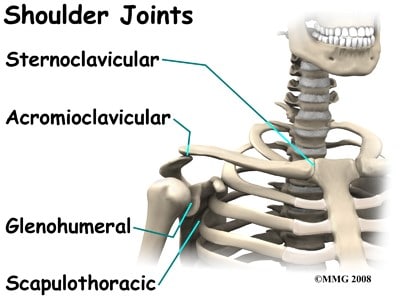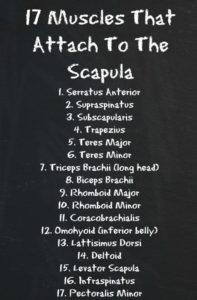Shoulder stability, why do we need it?
Shoulder stability is important for developing and maintaining healthy shoulders. Before we get into why it is important, let’s look at some shoulder basics. When people think of the shoulder they think of a ball-and-socket joint made up of the arm bone (humerus) and shoulder blade (scapula). However, the shoulder is so much more complex. It has four separate joints and seventeen different muscles! All of these structures work together to make the shoulder one of the most mobile joints of the body! It also means the shoulder is highly susceptible to injury. This post explains how to develop and maintain shoulder stability to keep you moving well.
So, what is stability?
Stability is the ability to maintain proper joint position and control during movement. Consider the phrase “proximal stability for distal mobility.” Proximal means closer to your core. Distal means further away from it. So, if your core is stable, movements in joints further from your core are better. In other words, stability makes you less injury prone. For the shoulder joint, the better your shoulder stability, the better your shoulder, elbow, and hand mobility will be.
Let’s look at how to get stability at the shoulder.
The shoulder blade is a key component for shoulder stability because it is close your core. Whenever your arm bone moves, so does the shoulder blade to keep the joint centered. Unlike other joints, the shoulder blade does not touch any other bones! That means the seventeen muscles attached to it move it. With so many moving parts, the shoulder joint can easily become dysfunctional. If something is not working correctly, muscle imbalance, lack of coordination, and weakness occurs.
So, what can we do to get better shoulder stability and proper function?
Resistance training can reduce injury and build healthy shoulders. But with so many muscles attached to the shoulder blade how do we know which ones to train? Great question! First, a trained professional (AKA physical therapist) can evaluate and assess which muscles are not firing properly and need strengthening. Second, if you can’t see a PT, a general shoulder strength program of the most common weakest muscles will do. Want to learn more? We are posting five short exercise videos on Instagram @symmetryptmiami and YouTube (Symmetry Physical Therapy) to help!
Check out our video!
Take a look at our shoulder stability introduction and exercises in the video below.



